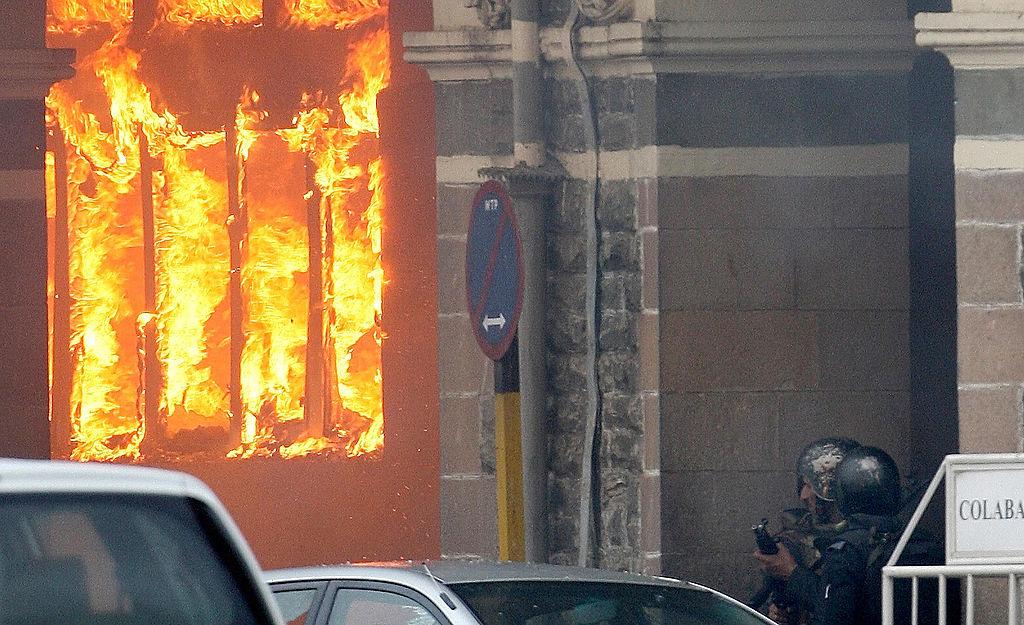
Terrorism remains a serious threat to global peace and security. No country is immune to it, but nor can any country effectively deal with it alone. The nature, intensity and impact of the terror threats vary between countries, but India and Australia both face risks that should be combated through coordinated efforts.
A key threat to both countries is Islamist terror groups, which have established a strong presence in Southeast Asia. The US withdrawal from Afghanistan and the regrouping of Islamic State Khorasan, al-Qaeda and other terror groups, coupled with instability in Pakistan, have contributed to a heightened risk from Islamic extremists.
India has long been a victim of such groups, including Lashkar-e-Taiba, Jaish-e-Mohammed, Hizbul Mujahideen, Indian Mujahideen and Jamaat-ul-Mujahideen. The recent history of Islamic terror attacks in India includes the 1993 Mumbai blasts, a 2001 suicide attack on the parliament in New Delhi, and the 2008 attacks in Mumbai.
Pakistan’s strategy of cross-border terrorism has further aggravated the problem. Islamic terrorists, sometimes called non-state actors or lone wolves, have established bases in India’s neighbours to target India or support anti-Indian groups. For example, National Thowheeth Jama’ath, a jihadist group implicated in the 2019 Easter bombings in Sri Lanka, is believed to have links with banned Islamic terror organisations in India.
Australia faces similar threats. According to the Department of Foreign Affairs and Trade, more than 200 Australians have travelled to conflict zones in Syria and Iraq and about 40 have returned. Many of these returnees were indoctrinated and radicalised and could become involved in terror activities in Australia or elsewhere.
The growing nexus between home-grown extremists and pan-Islamic terror groups increases the threat in the region. For example, Jemaah Islamiyah, which was responsible for the 2002 Bali bombings, was a close ally of al-Qaeda and has relationships with other groups in Southeast Asia. Similarly, the Abu Sayyaf Group, which had historical links with al-Qaeda, has been operating in tandem with Islamic State since 2014 towards their declared goal of establishing an independent Islamic State in southern Philippines.
Racially and ethnically motivated violent extremism, commonly known as right-wing extremism, is another threat facing India and Australia. For example, the Khalistan movement—a violent extremist movement that seeks to create a separate homeland for Sikhs—is still alive among overseas Sikhs in many countries, including Australia. In January this year, clashes erupted in Melbourne between Khalistan supporters and pro-India demonstrators.
Violent nationalism can spread hatred against other ethnic groups. The 2019 Christchurch mosque attack showed how such sentiments can drive an individual to commit an act of terror.
There is much that Australia and India can do to counter these risks, but improving their sharing of intelligence and data is perhaps the most important.
A key priority for improving Australia–India intelligence cooperation is shared profiling of new terror groups and extension organisations with a presence or links in the region. Normally this information comes from open-source and covert channels such as agent reports, infiltration operations, interception, monitoring and interrogations. For example, the interrogation of Khalid Sheikh Mohammed, described as the ‘principal architect’ of the 11 September 2001 attacks on the US, helped expose the plans of al-Qaeda and its affiliates.
Another priority area is improved intelligence sharing on travel and communications, which is crucial for disrupting transnational terror links. This requires coordination between the various agencies with responsibility for immigration, policing and aviation security. The 2017 incident where Australian authorities were able to foil a plot by Islamic State terrorists thanks to a timely alert by an international intelligence partner showed how important this is. Following the tip-off, Australian authorities were able to detain the suspects, who had planned to bomb an international flight and create a chemical weapon.
Terror financing, especially through covert means, is another priority area. Terrorist groups fund their operations through clandestine channels, such as ‘hawala’, used by their supporters in various countries. In 2014, the Australian Transaction Reports and Analysis Centre intervened against a Sydney firm that had transferred almost $19 million to Turkey and Lebanon as part of terror financing.
Better intelligence sharing will help neutralise these threats and bring other benefits. Many Indo-Pacific states are prone to organised crime, especially drug trafficking, human trafficking and arms smuggling—potentially even of weapons of mass destruction. The Indian Ocean has become the preferred maritime route for many drug traffickers operating from Myanmar and Afghanistan.
In May 2023, the Indian Navy seized more than 2,500 kilograms of methamphetamine with a market value of around US$300 million from a vessel in the Arabian Sea, using intelligence shared among India, Sri Lanka and Maldives. There are also reported connections between South American drug cartels and non-resident Indians, including in Australia, and Indian drug lords with links to Khalistan terrorists and Pakistan.
Since 9/11, intelligence agencies around the world have improved coordination and intelligence sharing. Countries like the US, India and Australia have created national counterterrorism centres for joint operational planning and joint intelligence.
Trust is a key factor in the nature and extent of intelligence sharing between two countries, and cooperation needs to approach this carefully. The Australian and Indian governments should work together to innovate when it comes to shared intelligence, and revamp their agencies’ approach in line with the challenges on the ground.
This article was written as part of the Australia India Institute’s defence program undertaken with the support of the Department of Defence. All views expressed in this article are those of the author only.